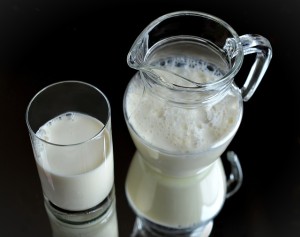According to the Bureau of Labor Statistics, tendonitis causes more than 70,000 people to miss work per year. This is just one of many reasons why it is important to understand the symptoms of tendonitis so that you can avoid not only the pain but the inconvenience it...
LATEST BLOGS
Husband and Wife of 54 Years Undergo Joint Replacement Surgeries On The Same Day
Premier Orthopaedics surgeon, Dr. Jonathan Garino, performed back-to-back procedures on a couple who have been married for 54 years! They shared their same-day surgery journey at the MUVE Center with @6ABC. Watch the incredible story below. Read the full ABC6 story...
What are Non-Surgical Treatment Options for a Herniated Disc
The spine consists of 26 bones called vertebrae and between them are cushion-like pads called “intervertebral discs”. The discs serve as shock absorbers for the vertebrae and help provide stability to the spine. When one of these intervertebral discs loses its normal...
Maintaining a Healthy Diet and Sports Nutrition

When you’re an athlete dedicated to pushing your body to reach the many demands of a sport, it’s crucial that you eat a balanced, nutritious diet to get the necessary fuel as well as replenish the vitamins and minerals your body loses. If you don’t eat the right foods, your body could suffer, which will affect your performance and could lead to serious injury.
Keep reading for more information about how to maintain a healthy diet and the importance of sports nutrition.
Different Types of Food
When fueling your body for peak performance, you want to consume calories from a variety of food sources to gain the nutrients each one contains. A healthy sports diet should include a balanced intake of carbohydrates and proteins so the body can utilize these nutrients during physical activity.
Protein
Protein is necessary for lean muscle mass maintenance, repair, and growth and optimum immune system function. Food sources of protein include meat, poultry, fish, eggs, soy, nuts, legumes, tempeh, and dairy products.
Carbohydrates
Carbohydrates are the most efficient sources of energy production and the most important for sports performance. They fuel the central nervous system and are stored in the body as glycogen to be used during exercise. Food sources of carbohydrates include bread, cereal, rice, pasta, fruits, dairy products, dry beans, and starchy vegetables.
Fat
Fat serves many purposes in the body, including protecting your internal organs from trauma, helping to absorb necessary vitamins from food, helping to manufacture hormones, providing an energy source, and maintaining healthy skin and hair. Food sources of fats include oils from plants such as olives, nuts, seeds, and peanuts; animal fats and fish oils; and higher-fat dairy products.
Calcium
Calcium works to prevent stress fractures and osteopenia, which is a loss of bone tissue that can lead to osteoporosis. If you typically avoid dairy products in your diet, try to opt for low-fat versions instead. You can also purchase low lactose or lactose-free milk. Three to four servings of dairy a day is recommended. Food sources of calcium include milk and milk products, calcium-fortified milk substitutes, almonds, broccoli, and dark-green leafy vegetables. Calcium supplements also are available.
Iron
It’s crucial to incorporate iron into your diet for energy and good health. Iron transports oxygen throughout the body and manufactures hemoglobin. Red meat is a good source of iron, and other food sources include poultry, fish, egg yolks, iron-fortified cereals, breads and other grains, legumes, nuts and seeds, dark-green leafy vegetables, and dried fruit. If you’re a vegetarian, you should take a multi-vitamin and mineral supplement that contains 100% of the daily requirement for iron.
Whether you’re a serious athlete or just focusing on being healthier, it’s vital to have a nutritious diet. The vitamins and minerals you consume from certain foods provide your body with the nutrients it needs to perform appropriately.
For more information about maintaining a healthy body as an athlete, download our eBookThe Athlete’s Guide to Reaching Peak Performance and Preventing Injury.



